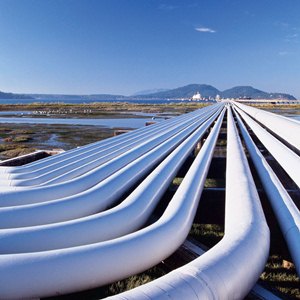Energizing Peace
Foreign Policy |
By Saleem Ali and Parag Khanna
Natural gas pipelines, not military supply lines, could pave the way for stability in power-starved Central Asia.
The lessons of geography appear to be ignored by policymakers in Washington D.C. these days. The Obama administration is pursuing tenuous negotiations with Iran regarding its supply of low-enriched uranium, in the hopes of taking the first step to erase the longstanding animosity between the two countries. It is also rethinking its Afghanistan and Pakistan policy to emphasize reconstruction and economic development. These two strategies are unfortunately disconnected -- despite the fact that Afghanistan shares a 600-mile-long strategic border with Iran.
Neither a "surge" of troops and aid in Afghanistan, nor negotiations over Iran's nuclear program without addressing its regional isolation, will bring Central Asia much closer to stability. The United States must support a policy that addresses the major deficiency all these countries share in common: a lack of clean, affordable energy for their poor populations. Only natural gas pipelines, not military supply lines, can do this.
The United States has so far been ambivalent about using Central Asia's natural resources to guide its policy, confounding the prospects for pipeline development. Yet without an energy infrastructure, individual U.S. reconstruction programs are going to struggle to get off the ground. For example, the Reconstruction Opportunity Zones (ROZs) established in Pakistan's tribal areas, which provide goods produced in these areas with duty-free access to the U.S. market, will have little impact without a steady energy supply to fuel local industry. Pipelines and power lines can be a much more significant economic stimulus. By providing energy for power-starved nations, they can empower microeconomic activity through lower fuel and electricity costs.
Natural gas pipelines can also provide an impetus for a diplomatic breakthrough with Iran. Two proposed pipeline routes currently offer the greatest opportunity to solidify regional integration and create lasting stability: the route from Iran via Pakistan to India (IPI), and from Turkmenistan via Afghanistan and Pakistan to India (TAPI). But thus far, the U.S. had sought to hinder international commerce with Iran, lobbying only for pipeline routes that avoid Iranian territory. It actively lobbied against the proposed Iran-Pakistan-India (IPI) project - even despite its tacit acceptance of the pipeline that runs between Iran and Turkey. This Iran-Turkey pipeline, which traverses Turkey's volatile Kurdish region, also exemplifies how security along such infrastructure can be adequately provided, even in conflict zones.
The IPI pipeline might represent the most promising confidence-building measure with Iran. Furthermore, recent discussions surrounding TAPI actually route it through Iran as well. If this turns out to be the case, it will force the U.S. to accept that the stabilization of Pakistan and Afghanistan requires a rapprochement with Iran. Since demand for gas in South Asia continues to skyrocket, the U.S. should encourage both projects and actively link their implementation to its conflict resolution strategy for the region. Détente with Iran need not wait for a nuclear breakthrough.
Furthermore, depending on the route of the pipeline, Afghanistan could earn as much as $100 million per year from transit fees of pipelines, providing a necessary boost for Afghanistan's perpetually aid-dependent government. These pipelines will aid, not hinder, America's efforts to provide economic relief to Pakistan as well. Even with the fairly high prices for gas Iran offers to Pakistan, IPI could save the country between $652 million and $1.17 billion annually, depending on the price of oil. This is approximately the same amount as the Kerry-Lugar legislation would deliver in non-military aid each year to Pakistan. According to government reports, Pakistan currently has an energy shortfall of between 3000 and 4000 megawatts (MW), while India's shortfall is estimated to be between 15,000 and 20,000 MW. For this reason, the development of energy projects were a focus of Secretary of State Hillary Clinton's recent visit to Islamabad - however, the talks reportedly ignored the regional context of this issue.
Finally, given concerns about climate change, natural gas pipelines offer donors an opportunity to limit the output of carbon emissions. Natural gas is likely to be the cleanest and most cost-effective fuel to meet Pakistan and India's energy shortfall. Apart from its use in power plants, natural gas is also being used in the transportation sector. The significance of compressed natural gas (CNG) in India was highlighted as early as 1998, when the Supreme Court ruled that all commercial vehicles in New Delhi should switch to natural gas by 2001 due to pollution concerns from diesel and petrol engines. Pakistan already has more than a million cars on CNG and ranks third in global CNG use after Brazil and Argentina. What's more, while oil is still largely transported across the globe by a fleet of more than 38,000 pollution-causing marine tankers, 93% of the world's gas continues to be supplied through pipelines.
Natural gas development offers a unique opportunity to tackle strategic, diplomatic, and environmental goals at the same time. Even in the world's most turbulent region, there is a possibility for renewed trade along what ancient merchants knew as the Silk Road.
If we genuinely want to stabilize this crisis zone without a heavy American footprint, new energy-based Silk Roads are the solution.
